10 Moments That Defined the Last Decade
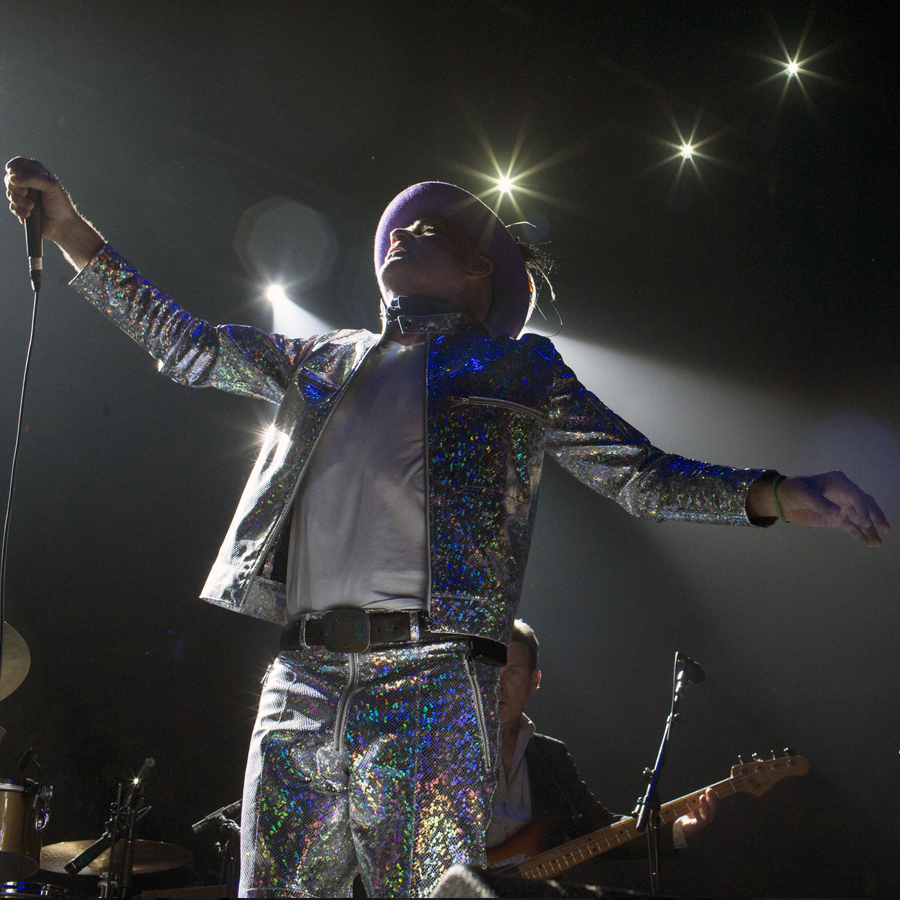
Gord Downie and The Tragically Hip embarked on their final tour in 2016 in the wake of the singer’s cancer diagnosis, offering Canadians one last opportunity to salute the Kingston, Ont. rockers and the tunes that became part of our national soundtrack. Photo: Marcus Oleniuk/Toronto Star/Getty Images
The year 2020 is, unofficially, the year of hindsight — hindsight being 20/20 and all — and so perhaps more than any other, this coming decade implores us to look into our immediate past in order to move forward.
In one way, hindsight allows us to put the preceding years into perspective. With the decoding of the human epigenome, Queen Elizabeth II’s Diamond Jubilee, Cmdr. Chris Hadfield’s out-of-this-world exploits on the International Space Station, the #MeToo revolution and Gord Downie’s activism on behalf of residential school survivors, the previous decade offered plenty of inspiration and hope for the future.
At the same time, hindsight allows a warning for just how fast crises like the impending climate catastrophe come upon us. As we spent a decade celebrating joyful moments like golden goals and royal weddings, the Earth got hotter, and our window for reversing the effects of climate change got smaller. We’re currently at the tipping point between saving our planet or sealing our own environmental fate, and the American election in 2020 will go a long way toward deciding how the most powerful country in the world combats climate change for the first half of the next decade. And that’s only one of the issues hanging by a ballot in 2020.
But let’s not get ahead of ourselves. Hindsight for the last decade’s biggest stories begins in 2009, with a momentous scientific discovery that will revolutionize disease treatment and human longevity.
2009: Scientists Decode the Human Epigenome
If the genome is the blueprint for human existence, then the epigenome serves as the instruction manual that explains how all the parts work. With the decoding of the epigenome by researchers at California’s Salk Institute in 2009, science took a leap forward in its understanding of how our cells work, how we might prevent diseases in the future and, perhaps, how to one day combat the effects of aging.
The breakthrough encouraged new efforts to delay aging and its related illnesses, including the Google-backed biotech company Calico, founded in 2013 with the intention of doing just that. And as scientists continue to unlock the secrets of our cellular makeup, it seems more and more likely that the Fountain of Youth has been inside us all along.

2010: Sidney Crosby’s Golden Goal
Nature tested humanity’s resilience throughout 2010, from the rescue of 33 trapped Chilean miners to the eruption of the Icelandic volcano Eyjafjallajökull, which crippled air travel over Europe with a cloud of ash. But in February, Canadian resolve took hold at the Olympic Winter Games in Vancouver.
RELATED: 20 Years After Retiring, Wayne Gretzky Keeps Scoring
After freestyle skier Alexandre Bilodeau won Canada’s first Olympic gold on home soil and the Canadian women’s hockey team bested the Americans to win gold, the Canadian men’s hockey team broke a 2-2 overtime tie against Team USA in the championship game with a side-of-the-net snap from Sidney Crosby — an epic goal that secured Canada’s record-setting haul of 14 gold medals. Most importantly, however, is that in a year of natural disasters and daring escapes, it served as the sort of indisputably joyous moment we desperately needed.
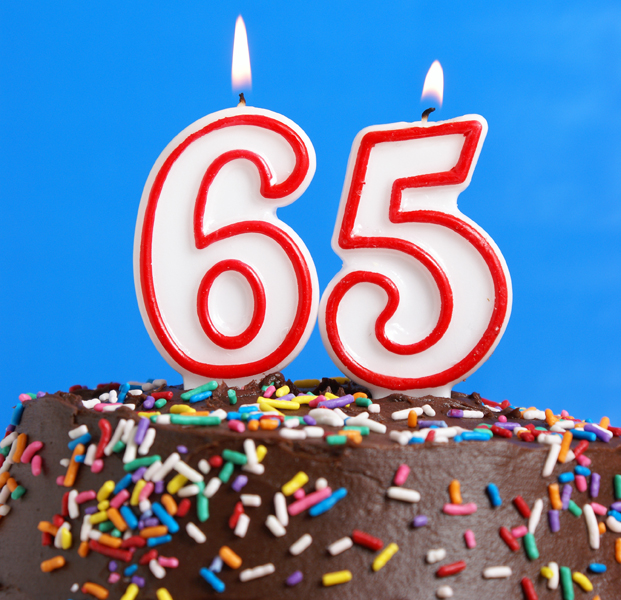
2011: The First Baby Boomers Turn 65
This year marked a milestone for the boomer generation in Canada as the first of them turned 65 — a benchmark that offered pause for reflection. In 2011, Fidel Castro, the Cuban leader who served as a geopolitical wildcard and Cold War antagonist during the boomer cohorts’ formative years — most notably during the Cuban Missile Crisis — resigned after 49 years in power. And Jack Layton, a boomer who propelled the NDP to official government opposition status for the first time in history, died just three months after at age 61.
Boomers who felt the pangs of the rising millennial tide could take solace in the fact that not only do they remain a formidable social and cultural influence, but one of their own offered a roadmap forward. In his final letter to Canadians, Layton declared, “Hope is better than fear. Optimism is better than despair. So let us be loving, hopeful and optimistic. And we’ll change the world.”
2012: Queen Elizabeth II’s Diamond Jubilee
Though Prince William and Catherine, Duchess of Cambridge, dominated royal discourse with their wedding and first official visit to Canada the previous year, Queen Elizabeth II owned 2012.
RELATED: 10 Royal Moments That Defined the Monarchy in the Last Decade
In her 86th year, the Queen became only the second British monarch to celebrate 60 years on the throne — the other being her great-great-grandmother, Queen Victoria. The Royal Family fanned out across the globe to lead celebrations while, at home, the Queen opened the Olympic Summer Games in London by appearing to parachute from a helicopter alongside Daniel Craig’s James Bond. No wonder Bank of Canada governor Mark Carney, who ensured Canada’s economy was shaken but not stirred during the Great Recession, chose that year to enter into Her Majesty’s service by hopping across the pond to assume the role of governor of the Bank of England.
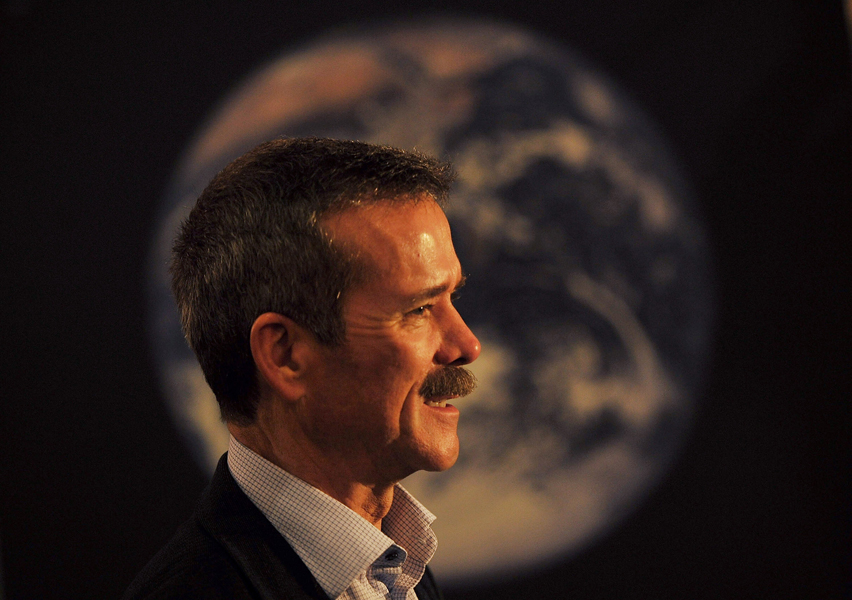
2013: The Year of the Canadian
Canada captured the attention of the world — and, well, outer space — in 2013, from Leonard Cohen wrapping a hugely successful world tour on the back of his chart-topping Old Ideas album to Kathleen Wynne becoming the nation’s first openly gay premier.
In March, however, Canada truly “launched” into the intergalactic consciousness when Cmdr. Chris Hadfield, 54, became the first Canadian to assume command of the International Space Station. While there, the astronaut channelled his inner artist, beaming back stunning photographs of Earth from space and going viral with a zero gravity rendition of David Bowie’s “Space Oddity” while taking time to chat with fellow Canadian star trekker William Shatner.
RELATED: Astronaut Chris Hadfield Talks Fame, Mars and the Future of Humanity
Then, in October, celebrated scribe Alice Munro, 82, received the Nobel Prize for Literature — the first Canadian honoured with the award. Almost as incredible, the entire year of Canadian accomplishments went by, and none of them involved beer, hockey or maple syrup.
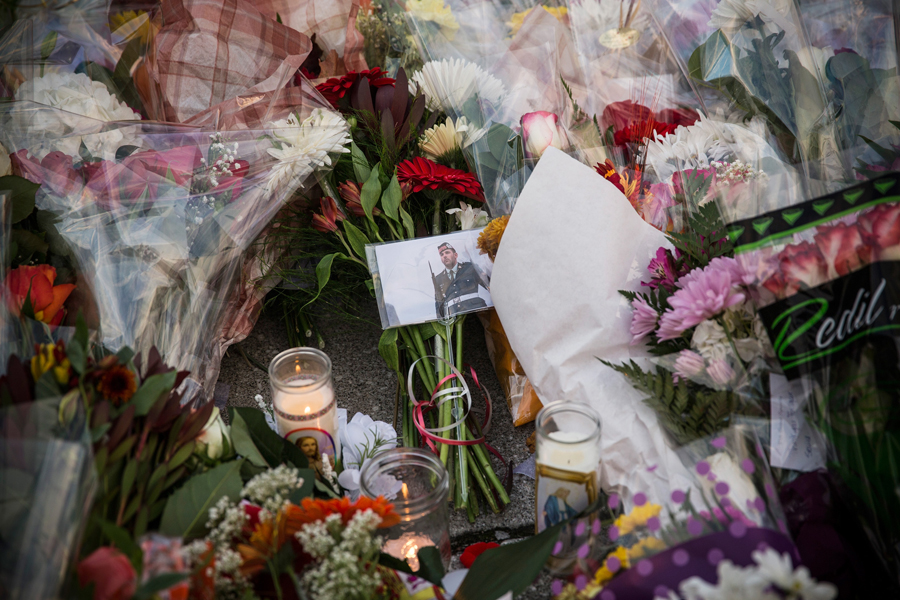
2014: The Parliament Hill Attack
If 2013 offered Canadians an emotional high, then 2014 served as a sobering time of reflection in the wake of a deadly attack on home soil.
On Oct. 22, a gunman arrived at Parliament Hill in Ottawa and embarked on a shooting spree, killing Cpl. Nathan Cirillo, a member of the Ceremonial Guard, and wounding three others before being fatally shot by an RCMP officer.
Sergeant-at-arms Kevin Vickers, 58, emerged as one of the heroes of the attack, leaping into action and returning fire at the gunman while defending the safety of the elected officials and civilians on the premises. Yet, despite the heroics of Vickers and the RCMP, the incident brought terrorism to the heart of Canada’s capital and left scars on the national consciousness that remain to this day.
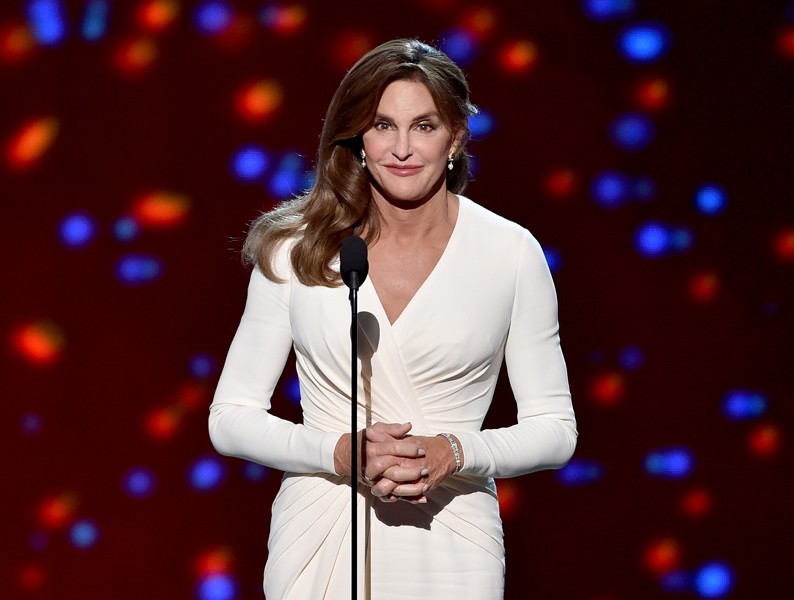
2015: An Icon Transitions
Caitlyn Jenner might be the only person who captured more headlines than the new Canadian Prime Minister Justin Trudeau in 2015.
At 66, the former Bruce Jenner, a decathlon gold medalist at the 1976 Summer Olympic Games in Montreal, came out as transgender during a televised interview before introducing herself as Caitlyn Jenner on the cover of Vanity Fair. Almost overnight, she went from being portrayed as the goofy butt-of-the-joke dad on her family’s reality show Keeping Up With the Kardashians to a woman in her 60s serving as the face of the American transgender community and the next stage of LGBT acceptance and equality.
She also proved a controversial figure, from her political beliefs to her comments on life as a woman, igniting deeper discussions about tribalism in the cultural discourse. Jenner proved that transitioning isn’t easy, for the person doing it and for those trying to accept it.
2016: Canada Thanks Gord
It’s impossible to look back on 2016 without noting Donald Trump’s unlikely presidential election. In Canada, though, our most emotionally charged moments played out to the tunes of The Tragically Hip. In the wake of Gord Downie’s battle with terminal brain cancer, the Hip announced the band’s Man Machine Poem tour — a Canada-wide goodbye culminating with a show in the band’s hometown of Kingston, Ont., and one final opportunity to celebrate what many consider our national soundtrack. Downie epitomized the “courage” he famously crooned about on stage and, later that year, when he released his multimedia project Secret Path, raising donations and awareness of the plight of Indigenous people in Canada, including our history of residential schools.
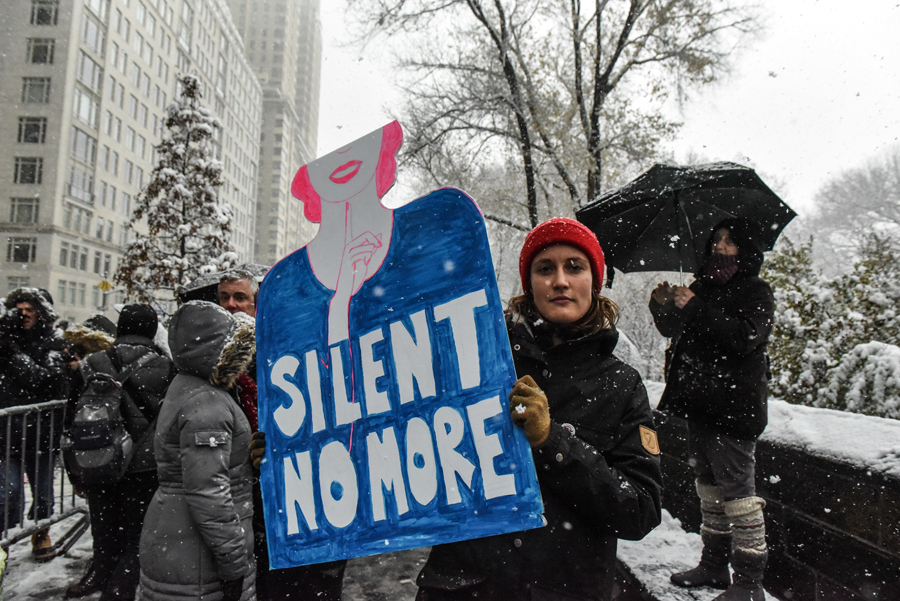
2017: The #MeToo Revolution
The seeds of the #MeToo movement were planted in 2014 with new sexual assault accusations against Bill Cosby. In 2016, Hillary Clinton’s election loss to a man with a history of misogyny ignited a collective rage, spurring worldwide women’s marches that drew more people than the Trump inauguration.
And in 2017, the takedown of Harvey Weinstein from sexual assault and rape claims revealed by the New York Times and Ronan Farrow in the New Yorker broke the dam. Women everywhere took to social media to recount stories of sexual assault, using the hashtag #MeToo. The revolution was televised, tweeted and shared, bolstered by the bravery of the victims who chose to speak out. Eventually, it spawned the Time’s Up movement, which combats workplace sexual assault and gender disparity in everything from hiring practices to industry representation and career advancement. It also put its money where its mouth is, establishing a legal defence fund to advocate for victims.
Humboldt Broncos Bus Crash
From natural disasters to the murder of Washington Post journalist Jamal Khashoggi, the March for Our Lives student protest against gun violence and the fire at Paris’s Notre Dame Cathedral, the year 2018 tested our collective resolve for positivity in the face of tragedy.
As if our government knew we needed a break, Canada finally legalized recreational cannabis, becoming the first major nation to do so, while the 17-day rescue of members of a boys soccer team and their assistant coach trapped in a flooded cave in Thailand kept a global audience captivated every daring step of the way. And, of course, the birth of Prince Louis of Cambridge in April — the third child of Prince William and Catherine, Duchess of Cambridge — and the wedding of Prince Harry and Meghan Markle in May provided royal watchers with two celebratory events in as many months.
But for Canadians, no news story hit closer to home than the Humboldt Broncos bus crash that killed 16 people in Armley, Sask. on April 6. The junior hockey team was en route to a playoff game when a transport truck ran a stop sign and struck their coach bus at an intersection, killing 10 players, two coaches, the Broncos radio announcer, an athletic therapist, a statistician and the bus driver.
RELATED: Put Your Sticks Out: Why the Humboldt Broncos Tragedy Resonates So Deeply
The tragedy made global headlines, with everyone from Pope Francis to Queen Elizabeth and Prince Philip offering condolences. The hockey community rallied around the team as well, including NHL teams putting the Broncos name on their jerseys and helmets. Meanwhile, in communities across Canada, the social media hashtag #PutYourSticksOut saw people displaying hockey sticks on their front porch in a tribute to the team.
In 2019, Jaskirat Singh Sidhu, 29, the driver of the transport truck that struck the team bus, pleaded guilty to 16 counts of dangerous driving causing death and an additional 13 counts of dangerous driving causing injury, resulting in an eight-year prison sentence. And nearly two years on, some of the surviving players have returned to the ice while others continue to struggle with the lingering physical and mental toll of the crash. All, however, remain a symbol of Canada’s strength and resilience in the face of unimaginable tragedy.
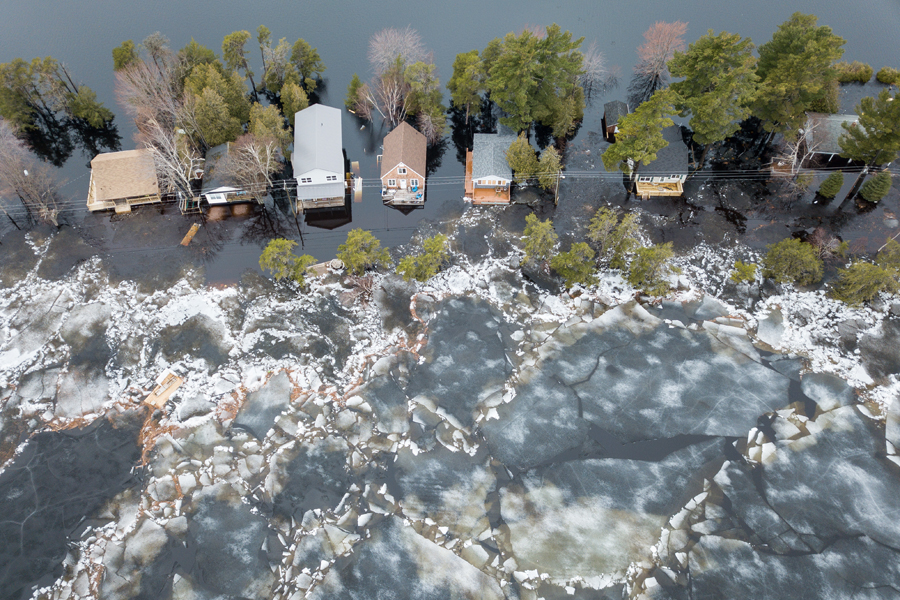
2019: On the Edge of a Climate Catastrophe
Flooding in Europe, heat waves in Greenland, the Arctic on fire, forests across the world burning, icebergs melting and a million animal species at risk of extinction — it’s like something out of a big-budget, end-of-days movie. Except it’s real and we’re the actors — both the heroes and villains — causing climate change to accelerate more rapidly than it has in two millenniums.
In 2019, the ongoing climate emergency took on a now-or-never sense of urgency, with scientists around the world issuing dire warnings about the rate of global warming, nations missing declared climate goals and even, as a United Nations report put it, “a climate apartheid scenario in which the wealthy pay to escape overheating, hunger and conflict, while the rest of the world is left to suffer.” In 2019, we endured some of the hottest months ever recorded — one report showed Alaska experiencing hotter temperatures than New York City in July — while also contending with pollution-related ailments and eco-anxiety. There is, however, hope.
RELATED: Climate Change is the Issue of Our Time
Despite the dire forecasts for our planet’s future, 2019 also saw a rise in eco-warriors leading the charge to stop the climate crisis from reaching a point of no return. In Montreal, 16-year-old Swedish teen activist Greta Thunberg met with Prime Minister Justin Trudeau and famed Canadian scientist David Suzuki before leading 500,000 people in a climate-change protest, while four million others joined her in climate strikes around the world.
“We are not in school today, you are not at work today, because this is an emergency, and we will not be bystanders,” Thunberg declared at the march. “Some would say we are wasting lesson time. We say we are changing the world. So that when we are older, we will be able to look our children in the eyes and say that we did everything we could back then.”
Thunberg continued to raise her voice about climate change throughout 2019 — eventually earning the title of Time magazine’s Person of the Year — but she wasn’t the only high-profile climate protester making waves. Actress and activist Jane Fonda, who turned 82 on Dec. 21, was arrested for her participation in multiple climate-change protests throughout the year, while Bill Nye, the Science Guy, 64, made headlines for dropping some truth bombs and a few F-bombs as he demonstrated the effects of global warming on John Oliver’s Last Week Tonight. Even the Pope challenged politicians and people in power to do better in curbing climate change, which he called a “challenge of civilization.”
So while 2019 didn’t solve the climate-change question, it offered hope that the human race is finally ready to combat a looming climate catastrophe.
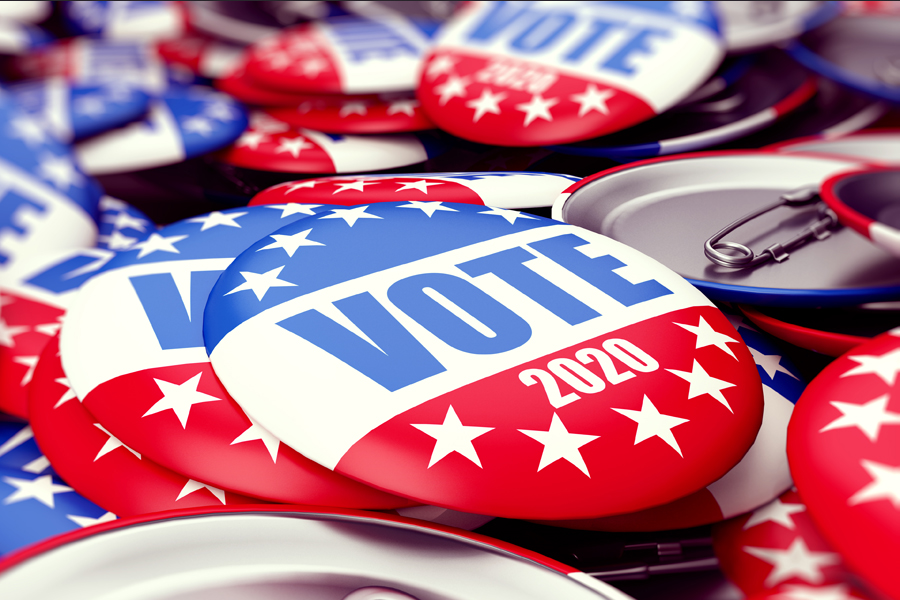
2020: The Year of Hindsight
Now we find ourselves facing a new decade. In the year of hindsight, no decision will be more scrutinized and second-guessed than the 2016 election of President Donald Trump as American voters return to the polls Nov. 3 to decide if Trump gets a second term.
In the meantime, with the impeachment of Trump – only the third president in history to be checked in this way – ratcheting up the polarization of left and right, the election year will prove to be a what some are referring to as a cold civil war.
The defeat or reelection of Donald Trump will send ripple effects across the United States and the globe. Countless scandals, lies and blunders have dogged Trump, 73, throughout his first term. The impeachment was brought on by his ham-fisted attempt to influence the outcome of the upcoming election in his favour, leading some to question whether he is simply incompetent or suffering from cognitive impairment or dysfunction.
The issue of aging and competence will take centre stage in 2020 after Donald Trump set the record as the oldest person to be sworn in for a first term as U.S. president at 70. That record could be shattered by almost a decade should one of the leading Democratic candidates win the party’s nomination and beat Trump in the election. Current frontrunner and former vice-president Joe Biden would be 78 on election day, Bernie Sanders would be 79, Michael Bloomberg, 78, with Elizabeth Warren, who would be 71, joking that she would be the youngest female president ever. And Pete Buttigieg, who currently polls fourth among the Democratic contenders, would also break a record — at 37, that of youngest president ever. It would put a Millennial in the most powerful office in the world, and handily eclipse Theodore Roosevelt’s record, who was 42 when he took the oath of office.
RELATED:
10 Music Legends Who Redefined Aging in the 2010s
Reader’s Choice: Heading into 2020, We Look Back at Our Top 20 Stories